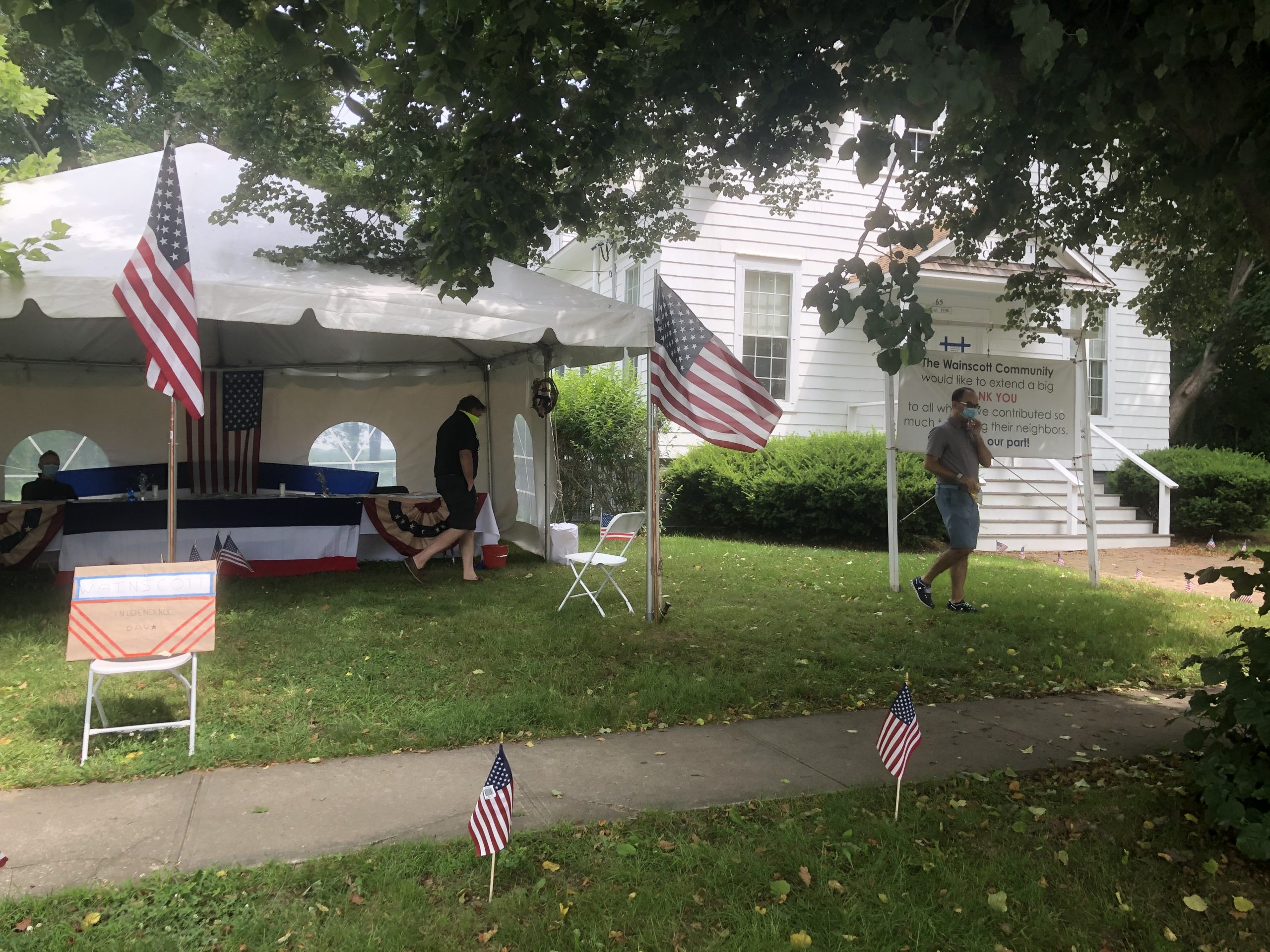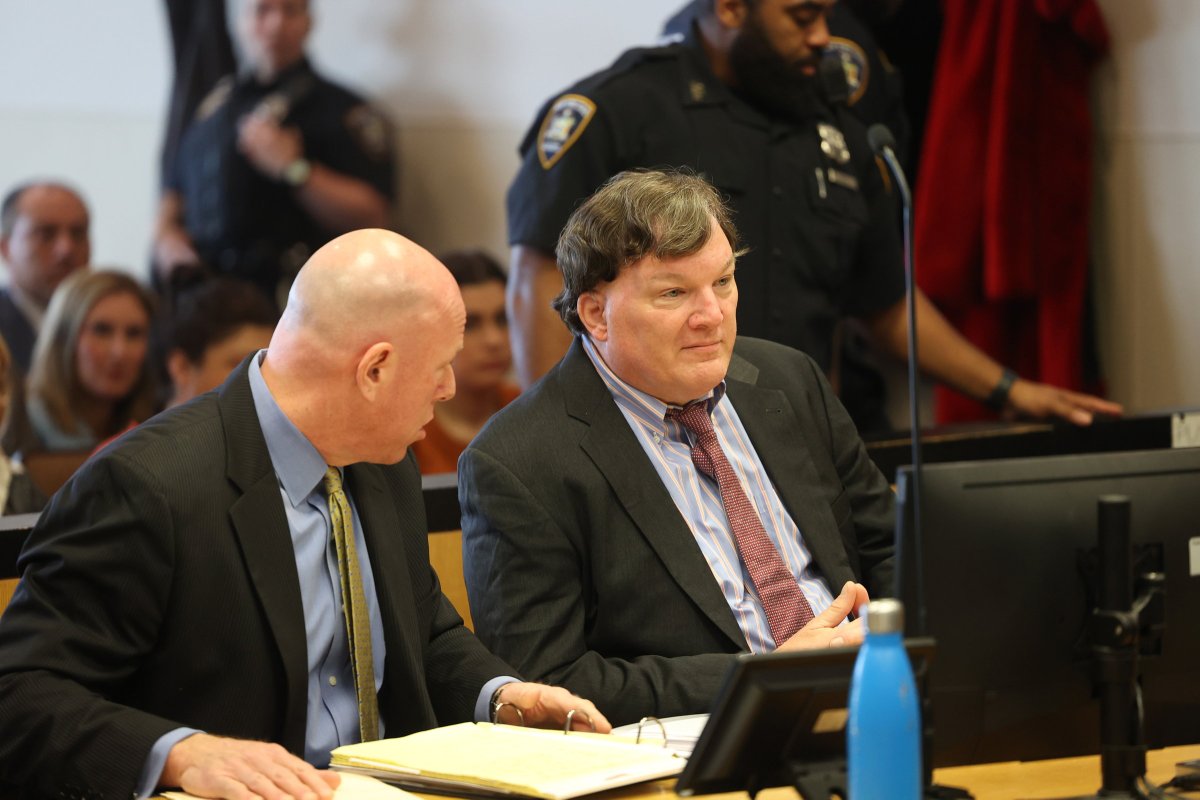Move for Wainscott Village Gaining Steam


A well-funded effort to incorporate Wainscott as a village received more than enough signatures over the Fourth of July weekend to move forward, according to the chair of Citizens for the Preservation of Wainscott, Gouri Edlich.
Michael McKeon, a partner at Mercury, a global public strategy firm, and who is a consultant and spokesperson for Citizens for the Preservation of Wainscott, said Sunday that about 140 signatures were needed to trigger an election on incorporation. Edlich said Monday that her organization had obtained upwards of 200 signatures over the weekend.
The group set up a canopy in front of Wainscott Chapel on Main Street over the weekend, scheduling those who wanted to sign the petition to incorporate to come at staggered hours, to ensure social distancing due to the COVID-19 pandemic.
When a reporter approached the table, a man collecting signatures said only that his name was Alex. He refused to talk about what he was doing, instead giving the reporter McKeon’s contact information. When the reporter started to photograph the canopy and chapel, Alex and another man collecting signatures walked away, so as not to be in the shot.
McKeon was asked Sunday if those collecting signatures were volunteers. He said they were.
Edlich elaborated on that point the next day. “Over this past weekend we had about 30 people volunteer. It was a lot of people.”
McKeon said it would be wrong to think that the proposed massive cable landing on Beach Lane in Wainscott from Orsted’s planned off-shore wind farm was the sole reason for the move towards incorporation.
Edlich said, “There is no one issue. There are many issues. The wind farm really got people organized but there are issues around development. The school. (Cars) speeding. The airport—lots of issues that have brought people together. It is really an incredible community.”
Edlich said she founded Citizens for the Preservation of Wainscott at the end of 2018. She was asked what the genesis of the organization was. “I assume you are familiar with the water situation that has been going on here with PFCs coming from the airport,” she replied. “That for me really perked up my attention. Then I started to get wind of the wind farm,” she said, acknowledging the pun. “My family and I started to talk to our neighbors. We started an informal petition to register objection to that, and to try and understand what due diligence the Town of East Hampton has done. It turns out they haven’t done any.”
In a court document filed last year by the attorney representing the Town of East Hampton in its several lawsuits against both the manufacturers of chemicals used by fire departments in the past to fight fires, as well as both the Bridgehampton and East Hampton fire departments, Nicholas C. Rigano writes, “Per- and polyfluoroalkyl substances (“PFAS”) are a family of hundreds of man-made chemicals comprised of primarily carbon and fluorine. PFAS chemicals were invented in the 1930s. PFAS chemicals are effective in products requiring fire extinguishment and repellency of water, oil and stains. PFOA and PFOS are the two most widely studied PFAS chemicals.”
The chemicals, he wrote, “may accumulate in humans in the serum, kidney and liver. PFOA and PFOS have lengthy half-lives within the human body.” These chemicals were stored and used for many years at the airport in Wainscott. In 2017, it was revealed that these chemicals had made their way into the aquifer, contaminating well water in Wainscott.
Edlich was asked about the various lawsuits the town has launched the past couple of years over the contaminated water issue. She responded, “The town has started running water mains. Getting clean water was really—our efforts really come after that, but I mention it as an example of how it wasn’t clear the town was really looking after our interests, and it sort of spawned my own investment and personal interest in all this. I have no idea about any lawsuits.”
Edlich sees an incorporated village with a very small governmental structure, with perhaps just two full time employees. It will mimic the boundaries of the Wainscott school district. She was asked if David Eagan, who is president of the school district, making him currently the highest elected official in the proposed village, was involved in Citizens for the Preservation of Wainscott. “I don’t know David Eagan,” she responded.
Eagan also is an attorney who represents John Tintle, the owner of the massive sand mine on the north side of the highway in Wainscott. Eagan has proposed converting that site into a major industrial park, to be subdivided into 50 lots, each housing its own business. Tintle’s companies that own title to that area are also defendants in the town’s lawsuit over the contaminants in the water.
McKeon declined to address the future of the sand mine, saying that is just one issue of many that the village of Wainscott will have to take on. “When we started talking about incorporation we discovered that there were issues across the perspective village,” McKeon said.
Edlich was asked if she thought incorporation had passed the point of no return. “Those are your words, but we are definitely going to continue,” she responded.
“Hopefully it is a statement that Town Supervisor Peter Van Scoyoc hears clearly. He has seen this move towards a village as an indictment of his leadership, and he is right,” McKeon said. Wainscott, McKeon added, “is determined to incorporate no matter what the town does.”



